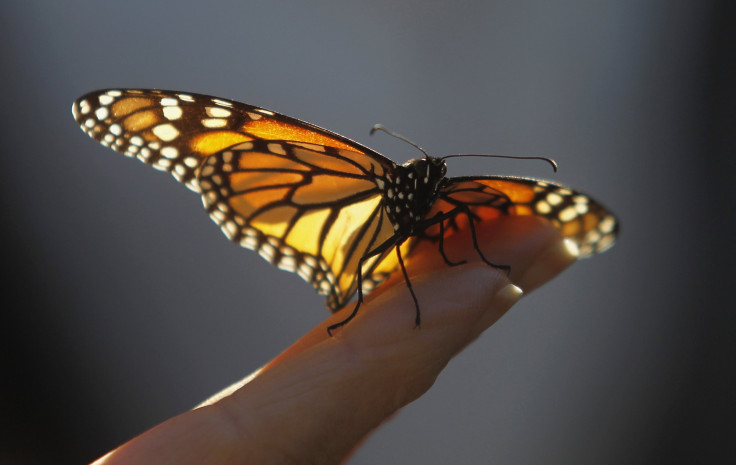Butterfly Species Face Extinction By 2050, Scientists Warn

The survival of many butterfly species is in danger and a number of them could face extinction over the next few decades, a recent study warns. Researchers say at least six species could die off by 2050 due to rising temperatures and drought linked to climate change.
"Butterflies are important culturally as part of our natural heritage, but there are other functions that could be impacted by their extinction, including pollution, pest control and decomposition of waste," Tom Oliver, from the Nerc Centre for Ecology and Hydrology in Wallingford, England, told the BBC. "Those unswayed by the beauty and importance of having butterflies in the countryside ought to be concerned about the disruption to these functions provided by these species."
In the study published in the journal Natural Climate Change, British researchers looked at the impact of an extreme drought event in 1995 on butterfly species. Considered the most arid period in recorded British history, it allowed researchers to identify butterfly populations most afflicted by dry weather. They were then able to project butterfly populations based on climate model predictions from the Coupled Model Intercomparison Project.
Climate change may mean vanishing act for UK butterflies http://t.co/G5ghlHH7ML pic.twitter.com/IWDLAD3tGA
— The Verge (@verge) August 10, 2015The study has its limitations, scientists said. The study took into account just a single drought and did not factor in the possibility that butterflies could adapt to drier conditions, the Verge reported.
Scientists said if carbon dioxide emissions continue to rise, and climate change accelerates, six species of butterflies are likely to go extinct in England. They believe some of the conditions are reversible, although they said their estimates for the effect of drought on butterflies were conservative.
The six species most susceptible to the effects of climate change are the cabbage white, the small cabbage white, the green-veined white, the speckled wood, the large skipper and the ringlet, which are all currently common species in England, according to the New York Times.
© Copyright IBTimes 2024. All rights reserved.






















